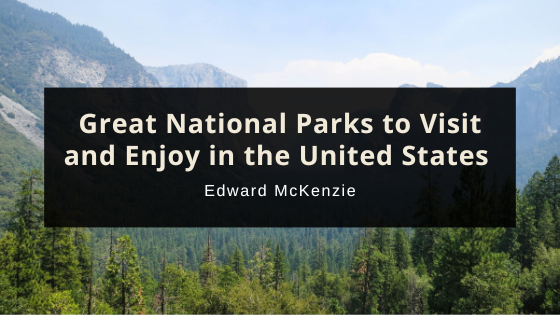The U.S. National Park System is responsible for protecting 85 million acres divided into 424 park units ranging in size and title. These parks reflect the history of America as a land with a rich geological and human past and range from a 0.2-acre national memorial to an 8.3- million-acre national park.
Yosemite National Park
An awe-inspiring park of 1,200 miles with excellent hiking trails, Yosemite has giant Sequoia trees, towering waterfalls, unique rock formations, and fantastic cliff faces. Many visit its famous landmarks. Half Dome is 8,800 feet above sea level, and El Capitan, the world’s largest exposed monolith, rises nearly 3,000 feet.
Yellowstone National Park
The first named as a national park, Yellowstone, offers diverse geography extending across Wyoming, Montana, and Idaho. Renowned for its fantastic geysers, such as Old Faithful, this 2.2 million-acre park has splendid lakes and mountains and buffalo-filled valleys.
Glacier National Park
Located on the border of Montana and Canada, Glacier National Park is frequently called the “Crown of the Continent” because of its splendid array of natural beauty. A 50-mile drive through the park on the Going-to-the-Sun Road provides a truly spectacular view.
Grand Teton National Park
Towering 13,770 feet, Grand Teton mountain finds its reflection in Jenny and Jackson Lakes. Home to grizzlies, black bears, bison, moose, and antelope, this park has beautiful waterfalls and fantastic views of the Tetons. Golden aspens brighten the park in Autumn. Visitors can visit another national park on the same vacation if they travel a few miles north to Yellowstone, which adjoins Grand Teton. Kayakers and rafters enjoy the Snake River that runs through this park. Those interested in history can visit Mormon Row and Menor’s Ferry in this same area.
Theodore Roosevelt National Park
In western North Dakota’s Badlands is President Theodore Roosevelt’s National Park. This president is credited with the establishment of five national parks. The Antiquities Act of June 8, 1906, permitted Mr. Roosevelt and future presidents to proclaim specific landmarks as historical and other structures and objects of scientific or historical interest as national monuments.
Great Smoky Mountains National Park
Another beautiful national park is located in the expansive Great Smoky Mountains of Tennessee and North Carolina. This area has a history of settlers dating back to the prehistoric Paleo Indians. Millions of people visit this beautiful park that is free to enter. Scenic drives lead to Cades Cove or onto the path toward Roaring Fork Motor Nature Trail. There, visitors can engage in several outdoor activities such as fishing, biking, and hiking. Bikers can ride on the Cades Cove Loop in the middle of the week between May and September, while hikers can trek to Rainbow Falls or Abrams. During these months, the road is closed to vehicles.
